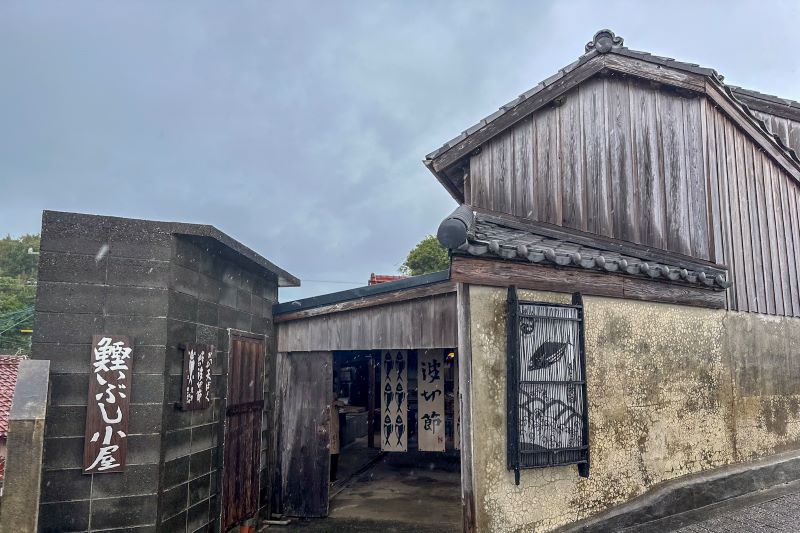Daio-cho, Shima City, has no shortage of “picturesque” scenery, with its stone-piled streets, Daiozaki Lighthouse, and many other scenic and famous sights. Since the end of the Meiji period (1868-1912), the town has been visited by many leading Japanese painters and became known as a “painter’s town”. Even today, many painters visit the area as a spot for sketching.
This time, I visited Katsuo no Tenpaku, a bonito smoking hut located in Nakiri, Daio-cho, the “painter’s town”. Tenpaku continues to maintain the traditional Tebiyama method of making dried bonito, which was perfected in the mid-Edo period. Part of the building that was used as a workshop and residence for the production of Katsuobushi (bonito flakes) at that time is now open to visitors (reservation required).
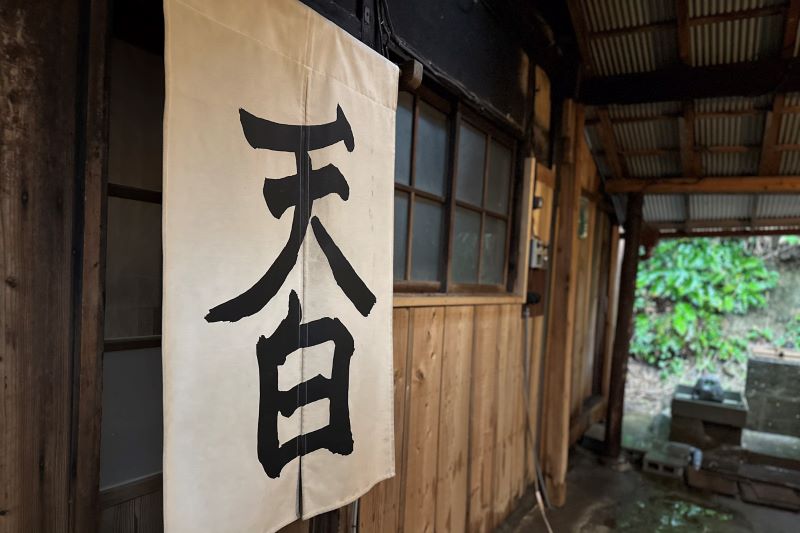
Nakiri and Katsuobushi
Makurazaki City and Ibusuki City in Kagoshima Prefecture and Yaizu City in Shizuoka Prefecture are famous for their dried bonito flakes. However, there are not many Japanese who think of bonito flakes when they hear the name Shima City in Mie Prefecture. So, why should we visit here?
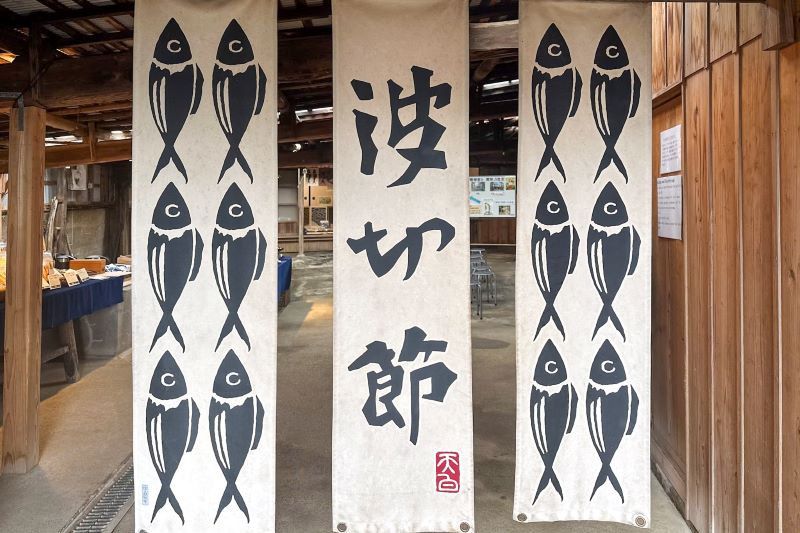
Nakiri-busi (Katsuobushi from Nakiri), dedicated to the gods since ancient times
Many wooden letters found at the site of Heijo-kyo, the capital of the Nara period, mention that “katauo (dried bonito / the original katsuobushi) were offered from Nakiri-no-kuni (Nakiri),” indicating that bonito was already processed here and humbly presented to the Imperial Court in the Nara period.
The Ise Jingu Shrine enshrines Amaterasu Omikami, the deity of the gods of Japan. For about 1,500 years, the Ise Jingu has offered salt, dried bonito flakes, kelp, and other foods to Amaterasu-Omikami twice a day, morning and evening, without missing a single day, as an offering of thanks and prayer – it’s called “Shinsen”. The food served on this sacred offering, including dried bonito flakes, came from Shima Province.
From this, we can see that Nakiri and dried Katsuobushi have a very long history.
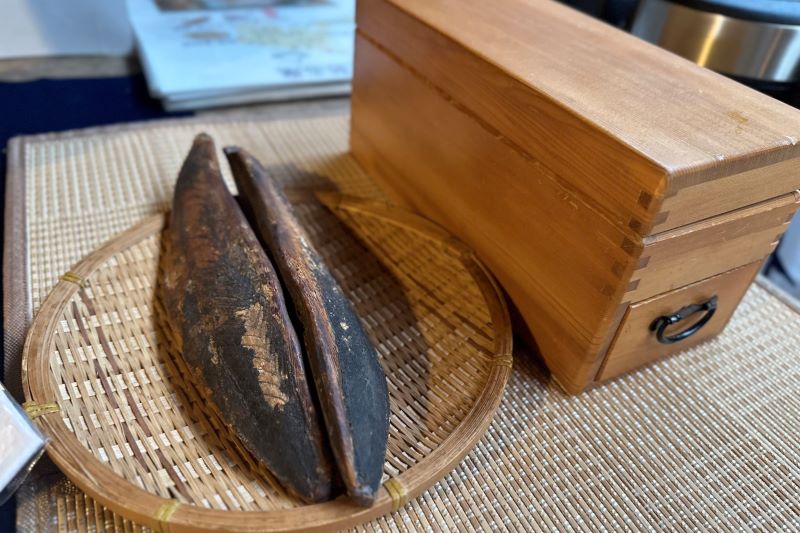
In the Edo period, it became a favorite of the common people
Katauo, the original dried bonito flakes, improved in preservation as time went by, and became an indispensable portable food for warlords during the Warring States Period. In the middle of the Edo period (1603-1867), when the culture of the common people in Edo began to flourish, the production of katauo made a dramatic leap forward. The production method using “smoking technique” was introduced to produce the same dried bonito flakes as today’s dried bonito flakes. As this production method spread rapidly and production increased, dried bonito flakes became available to the common people.
The fact that Nakiribushi is listed as an event in the “Countries’ dried bonito flakes ranking list,” which was made for fun among the common people in the Edo period, shows the high quality and popularity of dried bonito flakes in this area.
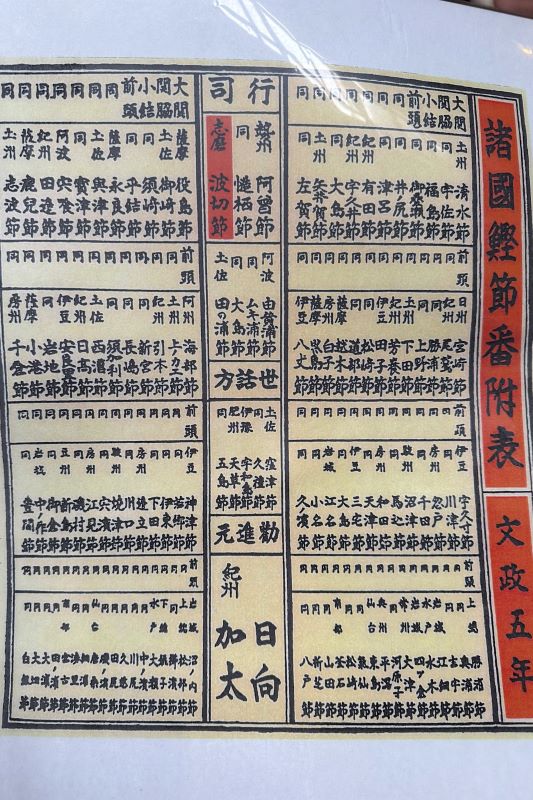
How to make Nakiribushi
The Tebiyama method, a traditional method
Tenpaku has been making dried bonito flakes using the “Tebiyama method” since the mid-Edo period. This style of smoking requires a great deal of time and effort, and there are only about 10 businesses in the country that still make it. Mr. Tenpaku saw the aforementioned “Countries’ dried bonito flakes ranking list” and thought, “Even in a rural area like this, we have to carry on this wonderful tradition that has been recognized since the Edo period”.
There are four major processes in the production of dried bonito flakes.
(1) Cut: Three to four people line up on a long horizontal cutting board to cut the bonito into three pieces.
(2) Boil: Cut bonito is boiled in a kettle to remove water. This is to prevent spoilage. At this point, the fish is roughly a quarter of its original size.
(3) Smoke: Here, the “Tebiyama method” is used, in which bonito is arranged in five or six layers in a seiro (steaming basket) and repeatedly smoked over an open fire using wood for about a month until the moisture content reaches 20 to 18%.
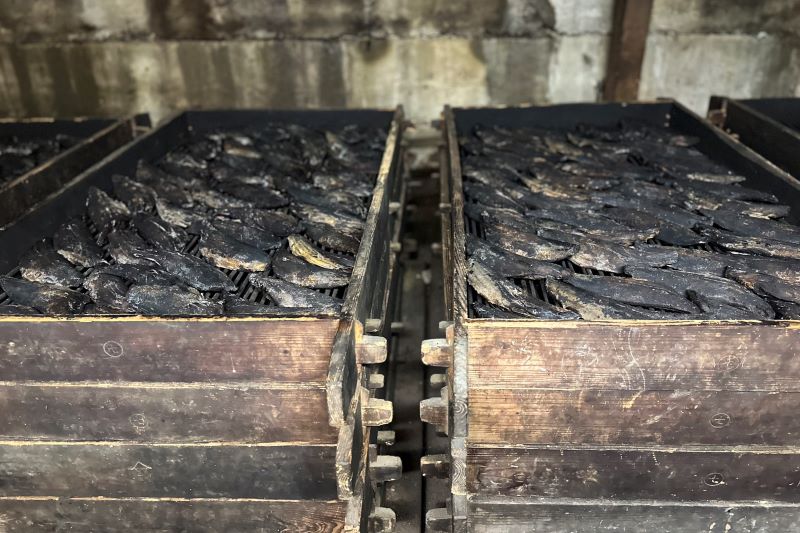
(4) Ferment: Mildew is applied by 3 times, over a total of 6 months.
After these processes, it is completed in September. The best ones are then selected and dedicated to the Ise Jingu Shrine in November. After that, we can eat the finished dried bonito flakes around December.
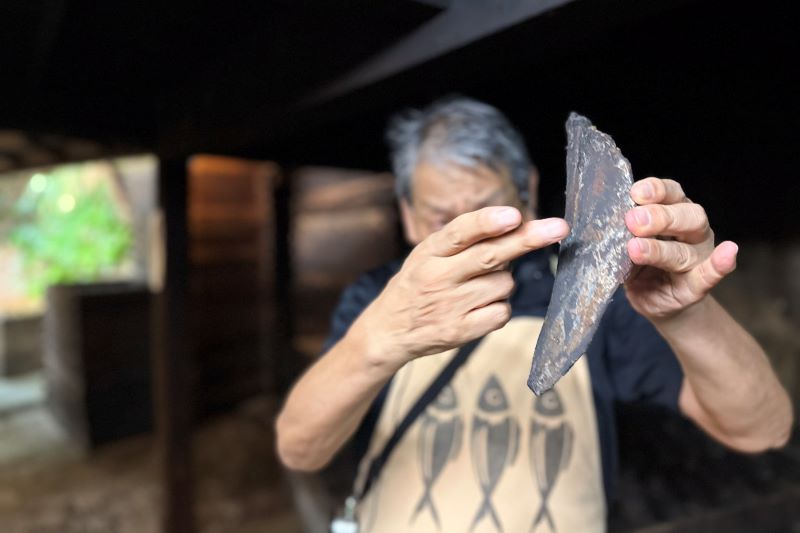
Contribute to the SDGs
Tenpaku uses Ubamegashi firewood for smoking bonito. This firewood was cut down in the satoyama of Ise Jingu Shrine. They realized that marine products would not grow if the mountains were in disrepair, so they decided to use it as thinned wood for smoking, and the mountains have been preserved. This is how they protect the environment of the sea and the mountains while making delicious dried bonito flakes.
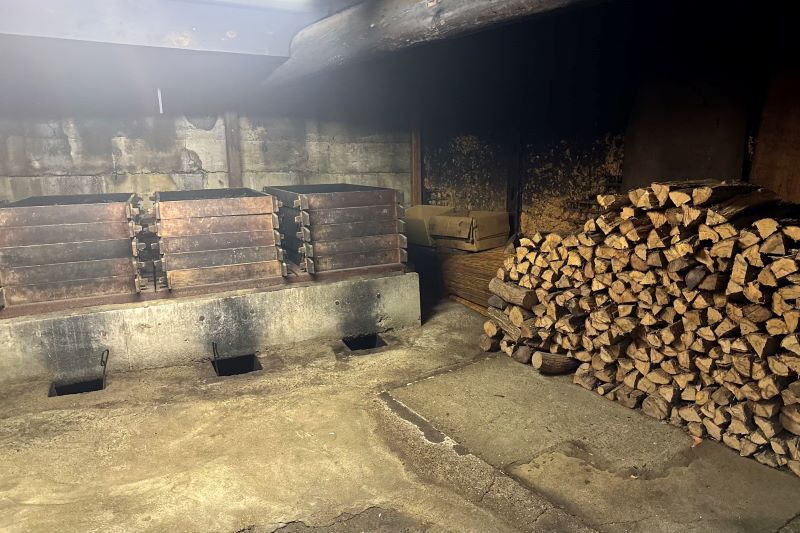
Feel Katsuobushi
After learning about the relationship between Nakiri and Katsuobushi, and the process of making dried bonito flakes, participants will actually try their hand at making dried bonito flakes.
Drink “dashi” (Japanese soup stock)
I had the first broth of bonito and kelp. It was a gentle taste that sinks into my body. I felt a little saltiness, but I was told that no salt is added. The natural content of kelp can sometimes be felt as a salty taste. What, you mean my tongue is sensitive? I was a little happy.
In a document from the Nara period (710-794), long before the concept of “dashi” was established, it is said that “katsuo no irori” was designated as a tax to be paid for products from various regions. It is not too much to say that this was the beginning of seasoning in Japan. From this, I realized that the Japanese people’s appreciation of bonito is deeply engraved in our DNA.
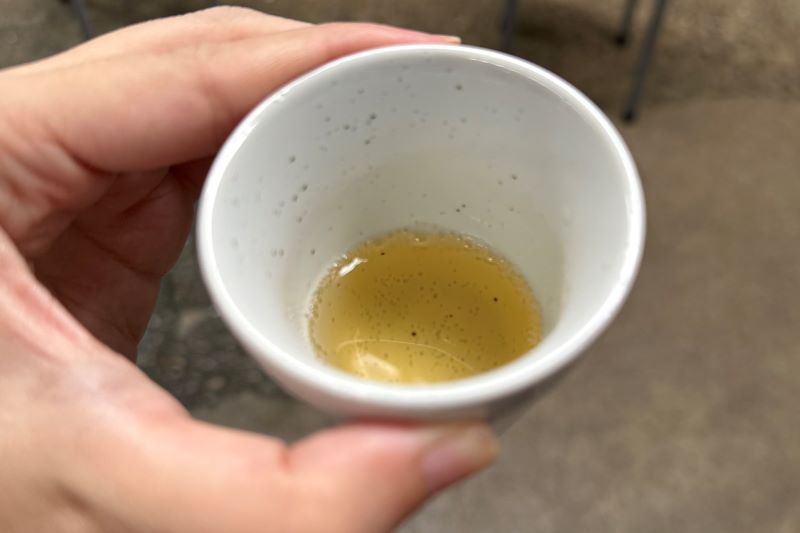
Grinding Experience
Until recently, there seemed to be a bonito shaver in every household, but for me, this was my first experience with one. You have to put one foot in front of the other and move the bonito shavings parallel to the shaver, but it is quite difficult to do. My shavings were very thin and limp (the photo shows the shavings shaved by the husband).
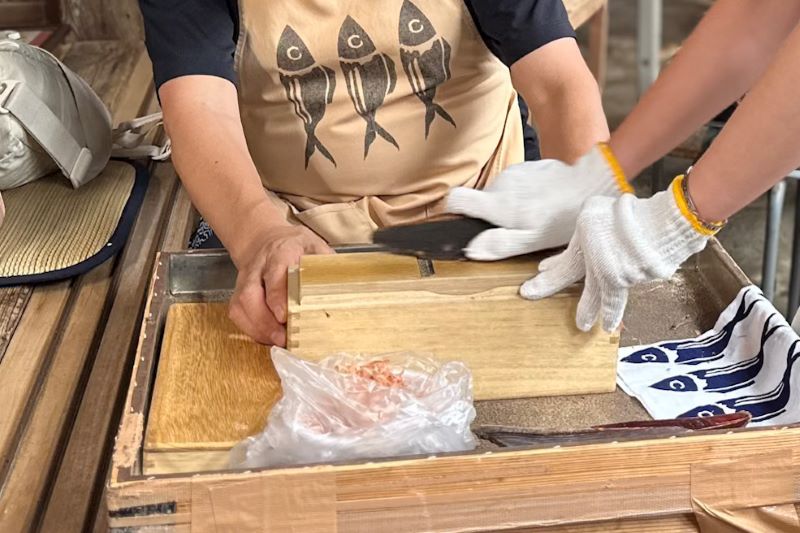
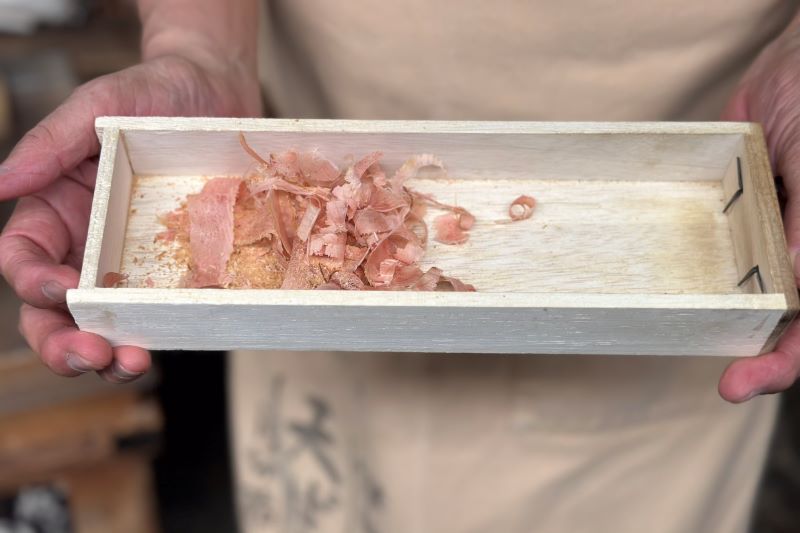
Eat Okaka Gohan (Rice with bonito flakes)
I will be having katsuobushi gohan using the dried bonito flakes I just shaved. The rice is cooked in an earthenware pot and the dried bonito flakes are boldly added to the glossy rice, and a dash of soy sauce is added. Wow, perfect.
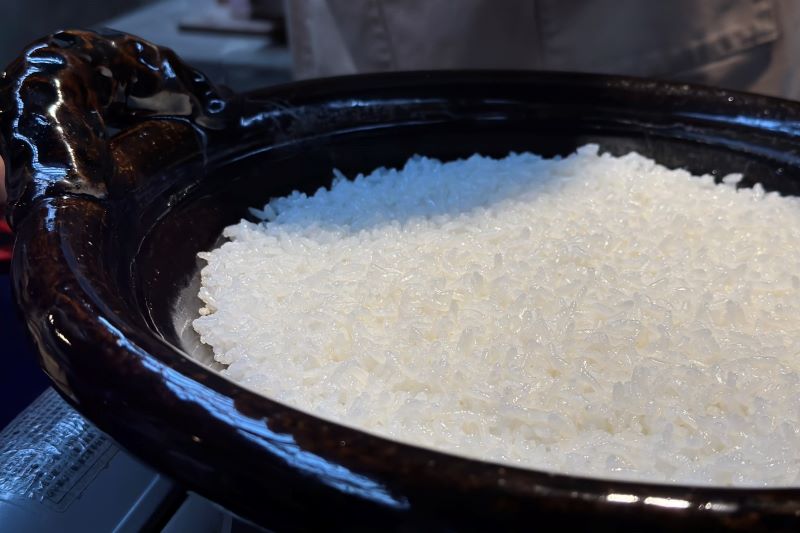
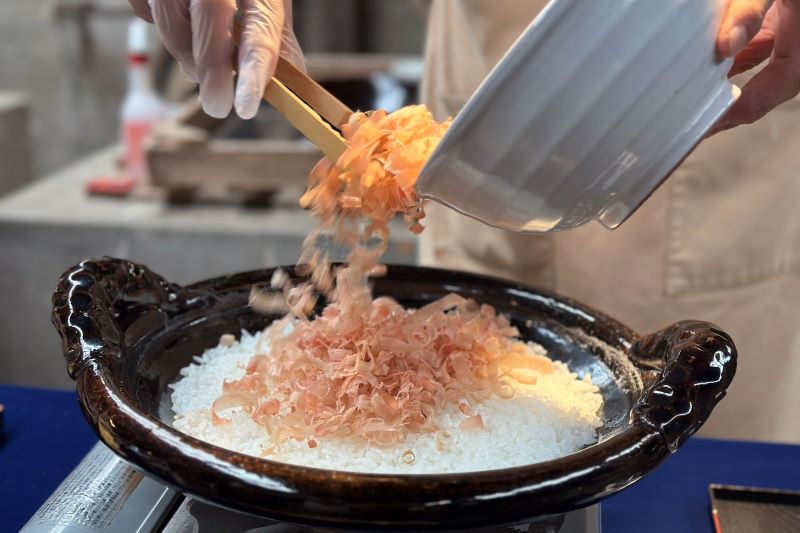
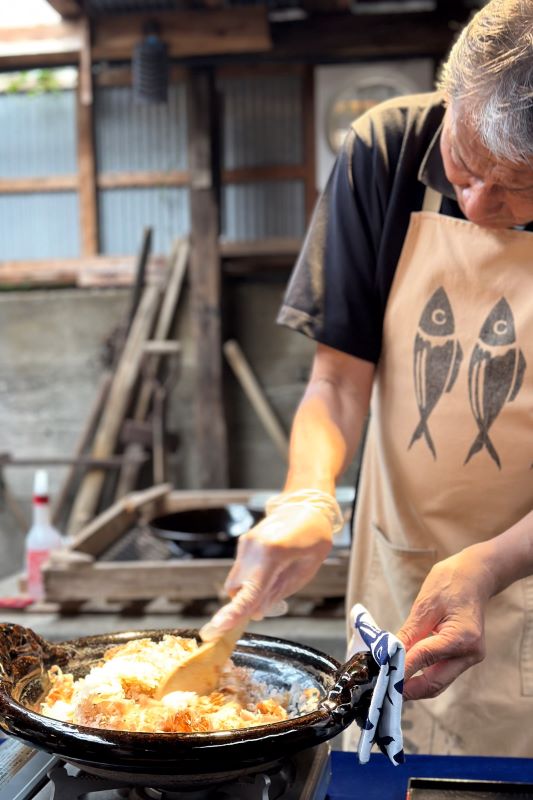
Before eating rice, I would like to talk about a uniquely Japanese concept called “shinjin kyoshoku”. Shinjin Kyoshoku means that the gods and people eat the same food and receive power from the gods. It is unique to Japan to be able to eat food offered to the gods.
This time, as if we were receiving a “shinsen,” let’s purify ourselves first! We will have a little sake, which we will use as a kind of sake.
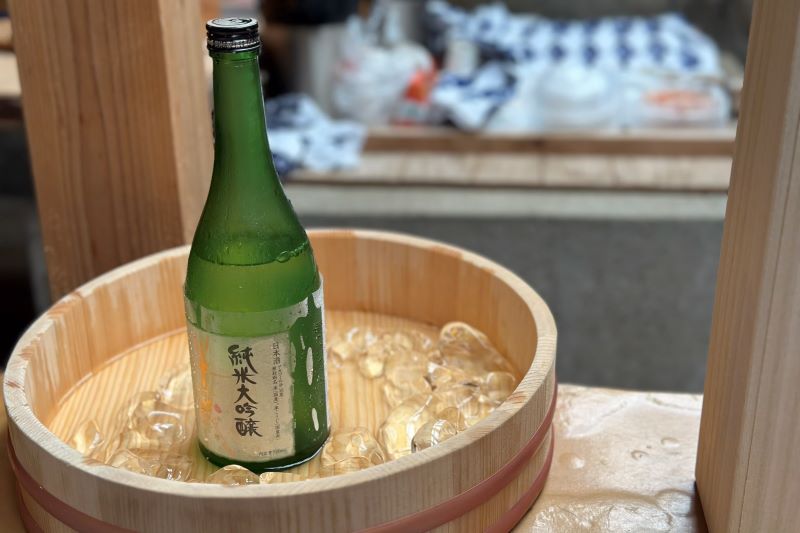
Now then, let’s try it! Rice, dried bonito flakes, and a little bit of soy sauce…the ultimate in simplicity, but it is so delicious. I could eat as many bowls as I wanted, although I had to hold back because I had a lunch scheduled for later in the day.
For Japanese people, okaka gohan is nostalgic and heartwarming. For foreigners, it is a good opportunity to feel the original landscape of Japanese meals.
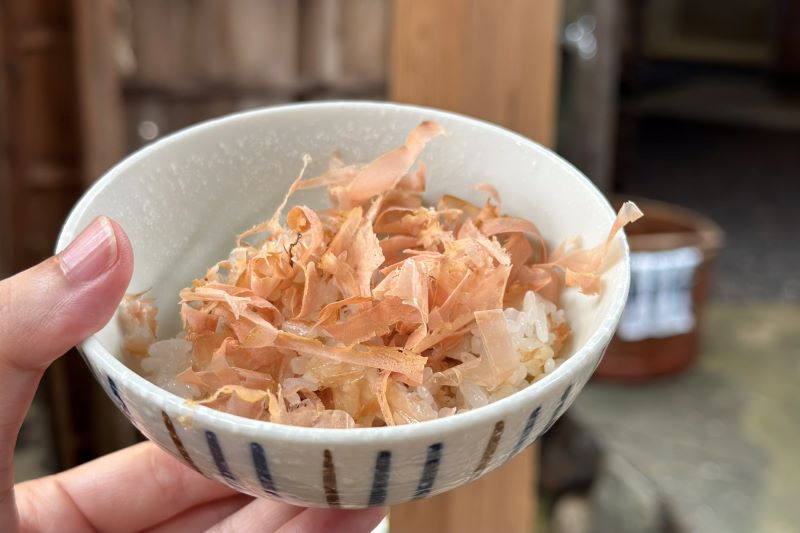
There are many opportunities to see dried bonito flakes in Japan, but there was certainly something that I could feel only because Tenpaku is preserving the traditional manufacturing method in a land that has been dedicated to the gods since ancient times. I felt that “I came here for the bonito flakes”.
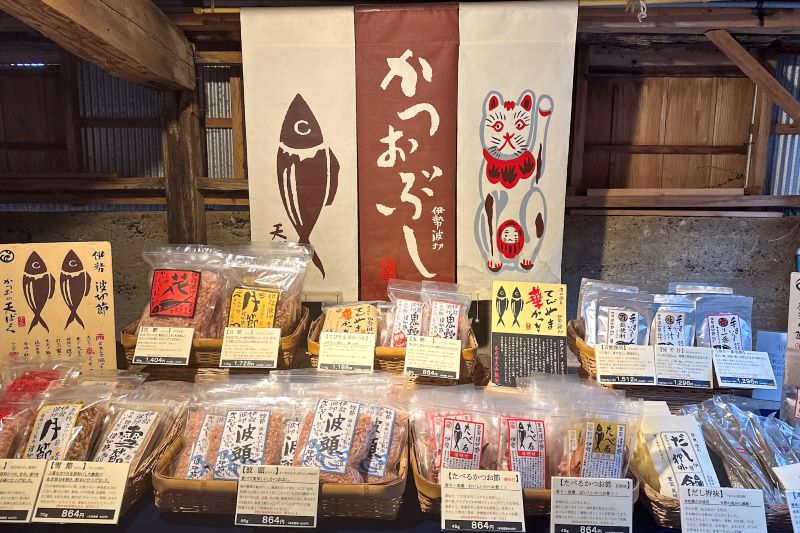
Last but not least…the impactful graphic design was created by printmaker Tokuriki Tomikichiro. Tokuriki’s mentor, Tsuchida Bakusen, stayed and painted in this “painter’s town”. Tokuriki commented that he had created something that would not fade away even after 100 years, and in response, the fourth generation decided to “create something that would be as good as the design”. It is wonderful, isn’t it?
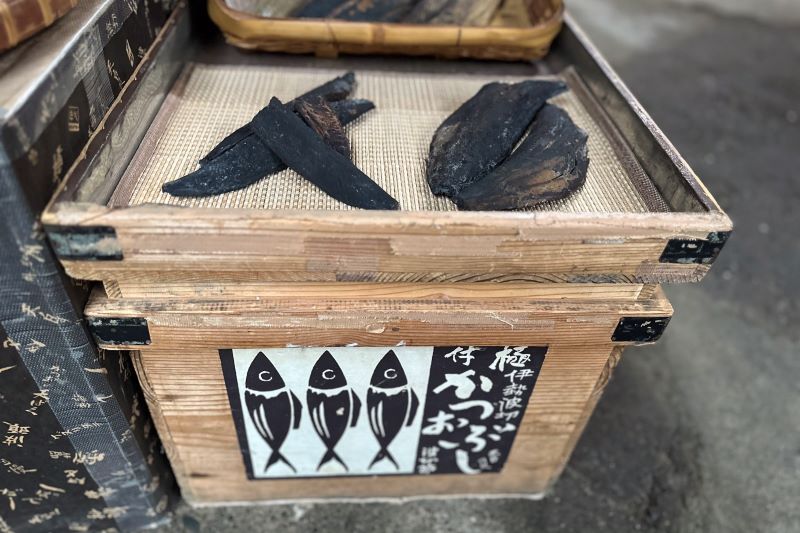
Katsuo no Tenpaku “Smoking Hut” (Advanced reservation required)
| Address | 2545-15 Nakiri, Daio-cho, Shima city, MIE |
| TEL | +81-599-72-4633 |
| Close | Wednesday, Sunday, Obon Holiday, December, Year end & New Year Holiday |
| Website | https://katuobushi.com/ |

